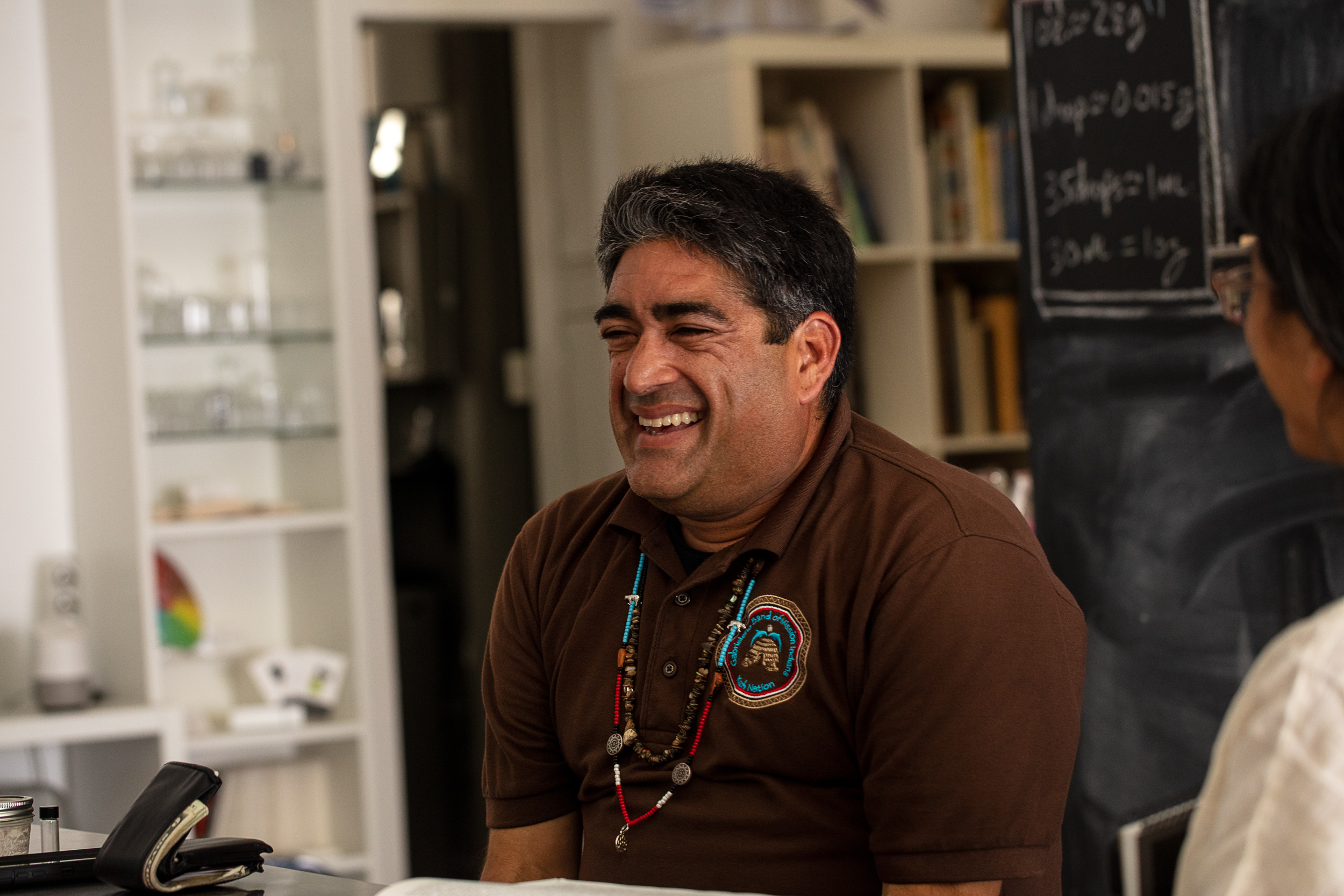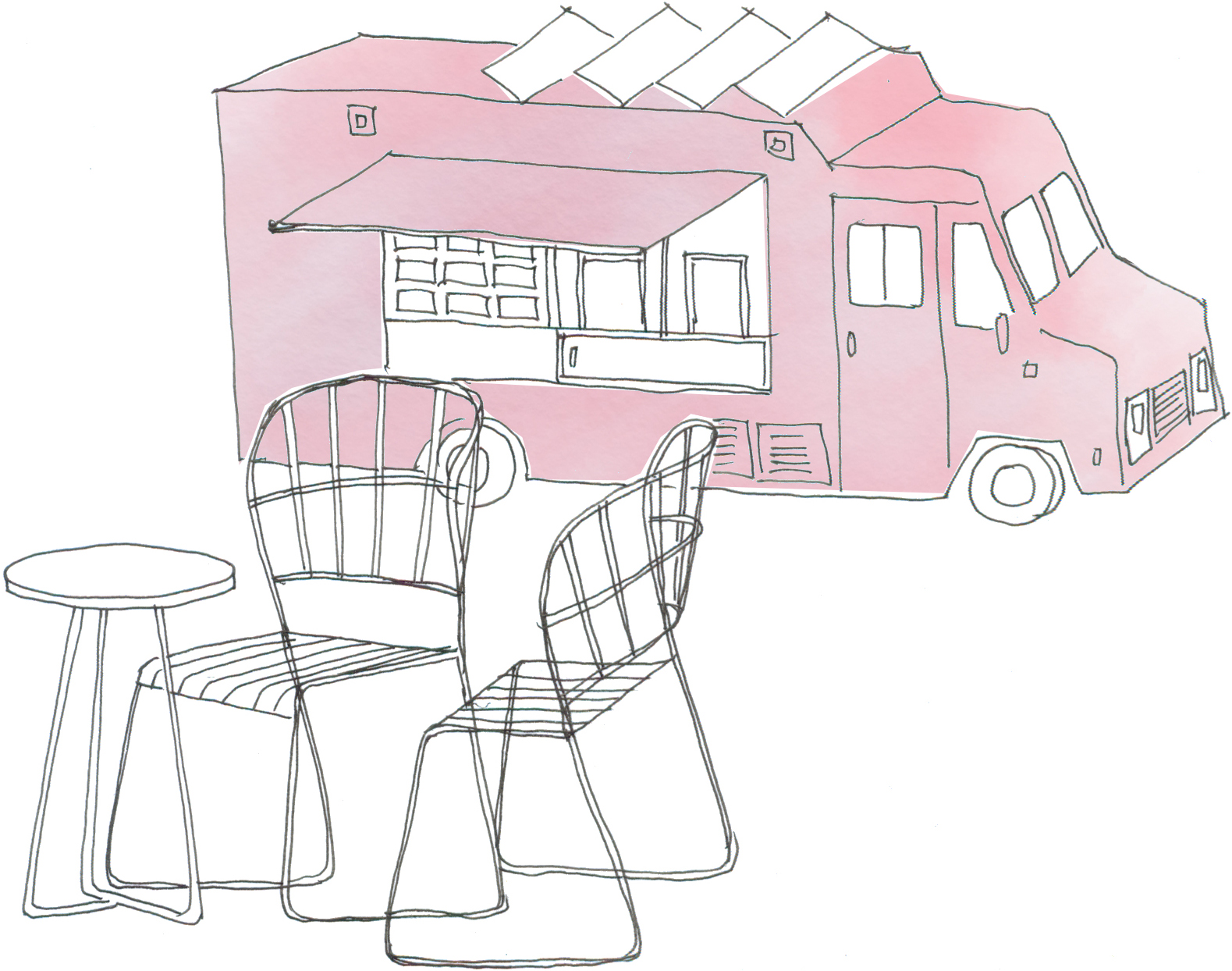pre-1781
The Yaangna
The history of Los Angeles stretches back to the indigenous tribes who inhabited the land for thousands of years. The
Gabrieleño
Tribe—which means “people of the San Gabriels”—were the original people of the Los Angeles basin, and their story constitutes a history and tradition that we can only begin to imagine today.




This history unfolded long before European settlement, before western dating systems and history, and western ideas of growth and dominance over nature. Much of the tribe’s history was lost when missionaries arrived in 1771 to build the San Gabriel Mission. The missionaries began to call them
Gabrieleños, or people of the San Gabriels.
Previously, the Tribes had not identified themselves by a single name, but rather by the region they inhabited.
Ochuunga. Maawnga. Topaanga.
The basin was filled with tribes of many names.
But after the missions, for centuries, settlers referred to them by this new Spanish name, Gabrielino. The name endures today.
In 1781, forty-four Spanish colonists settled on the banks of the fertile river to establish El Pueblo de Nuestra Señora La Reina de Los Angeles de Porciuncula—now known simply as Los Angeles. In the centuries that followed, even more of their history was lost.
Previously, the Tribes had not identified themselves by a single name, but rather by the region they inhabited.
Ochuunga. Maawnga. Topaanga.
The basin was filled with tribes of many names.
But after the missions, for centuries, settlers referred to them by this new Spanish name, Gabrielino. The name endures today.
In 1781, forty-four Spanish colonists settled on the banks of the fertile river to establish El Pueblo de Nuestra Señora La Reina de Los Angeles de Porciuncula—now known simply as Los Angeles. In the centuries that followed, even more of their history was lost.
What we do know about the
Gabrieleño
people is that they had a deep reverence for nature: its seasons, its cycles, and the sacred river. Yaangna was their central village, located on a site in present day DTLA, where they lived in domed huts made from willow branches and tule reeds. The Yaangna were a community of approximately 5000 hunters and gatherers, who fished in the rivers and seas, hunted in the mountains, and walked among the prairies filled with native grasses, nutsedge, clover, and wildflowers. They dug up roots, bulbs, tubers and wild onions, and collected edible seeds like chia.
They harvested acorns from oak forests in the foothills and collected manzanita berries from the chaparral. The Yaangna cultivated the land by scattering seeds, pinching off new shoots from plants, and setting fires to manage the land. They used the sycamore and willow trees that grew along the river- one such sycamore lived four hundred years, through the missions and settlers, all the way up the end of the 19th century. There is some irony in the fact that European settlers also misnamed the famed sycamore, calling it El Aliso, which is Spanish for “The Alder.”
Although much was lost from this time, today there is a strong community of Native Americans in Los Angeles. This community carries on the traditions of their ancestors: the first Angelenos and the first inhabitants of this site.
They harvested acorns from oak forests in the foothills and collected manzanita berries from the chaparral. The Yaangna cultivated the land by scattering seeds, pinching off new shoots from plants, and setting fires to manage the land. They used the sycamore and willow trees that grew along the river- one such sycamore lived four hundred years, through the missions and settlers, all the way up the end of the 19th century. There is some irony in the fact that European settlers also misnamed the famed sycamore, calling it El Aliso, which is Spanish for “The Alder.”
Although much was lost from this time, today there is a strong community of Native Americans in Los Angeles. This community carries on the traditions of their ancestors: the first Angelenos and the first inhabitants of this site.
 Cattails
Cattails
White Sagebrush

Marsh Clay

California Poppy

One of the sources we cite for this time period is The First Angelinos: The Gabrielino Indians of Los Angeles by William McCawley (1996). McCawley provides a map showing Gabrielino settlements on the Los Angeles-Santa Ana Plain. A quick study of this map shows the Yaangna on the site.
Workshop
pre-1781
This workshop took place on June 11th at The Institute for Olfaction. The final scent will be available to experience at our exhibit at the LA Design Festival.
Notes from the workshop:
This workshop was unusual in that it did not take long to decide to use only one scent. Artemisia Californica- the most dominant plant in coastal sage scrub- would have dominated the landscape of our site before 1781. It remains a vital plant in the culture of the Gabrieleño Tribe.
Matthew R. Teutimez, a tribal biologist with the Gabrieleño Band of Mission Indians of the Kizh Nation, worked with us on this workshop. He brought his own distillations of several native plants, including Artemisia californica.
Matthew walked us through not only the history of the tribe, but also current practices and uses of the native plants on the site. His knowledge was invaluable in understanding the site at this time period, but also in informing our current understanding of native medicinal plants.
Notes from the workshop:
This workshop was unusual in that it did not take long to decide to use only one scent. Artemisia Californica- the most dominant plant in coastal sage scrub- would have dominated the landscape of our site before 1781. It remains a vital plant in the culture of the Gabrieleño Tribe.
Matthew R. Teutimez, a tribal biologist with the Gabrieleño Band of Mission Indians of the Kizh Nation, worked with us on this workshop. He brought his own distillations of several native plants, including Artemisia californica.
Matthew walked us through not only the history of the tribe, but also current practices and uses of the native plants on the site. His knowledge was invaluable in understanding the site at this time period, but also in informing our current understanding of native medicinal plants.





Artemisia californica or California Sagebrush is the only scent we are using for this period (Left). Much to the delight of Saskia at IAO, and our team, Matthew brought in these handcrafted essences of native plants (Middle).
Other scents that were considered for the pre-1781 scent:
Fleabane, or “Sweetscent”
White sage- pungent- like neosporin, reduces anxiety- spiritual, cleanser. May be used as a home cleaner for mold & fungus.
Chia- the seed from sage was often given as a gift since it contains moisture
Coastal goldenbush - morning dew intensifies coastal bush smell
Asteraceae - anti-flamatory component
We ended up going with Artemisia Californica because it is the most dominant plant in coastal sage scrub
During this workshop, we also learned that Gabrieleño burial sites still exist beneath the streets of DTLA. Notably, the former site of the El Aliso Sycamore tree was a burial site for tribe leaders Tribe leaders.
Fleabane, or “Sweetscent”
White sage- pungent- like neosporin, reduces anxiety- spiritual, cleanser. May be used as a home cleaner for mold & fungus.
Chia- the seed from sage was often given as a gift since it contains moisture
Coastal goldenbush - morning dew intensifies coastal bush smell
Asteraceae - anti-flamatory component
We ended up going with Artemisia Californica because it is the most dominant plant in coastal sage scrub
During this workshop, we also learned that Gabrieleño burial sites still exist beneath the streets of DTLA. Notably, the former site of the El Aliso Sycamore tree was a burial site for tribe leaders Tribe leaders.




For this workshop, we are grateful to have worked with Matthew R. Teutimez, a tribal biologist with the Gabrieleño Band of Mission Indians of the Kizh Nation.
Matthew provided us with a rich historic context for not only our site, but our region. He also taught us quite a few things about native plants and their medicinal uses.
To find out more about the Kizh Nation, check out there website here.
Matthew provided us with a rich historic context for not only our site, but our region. He also taught us quite a few things about native plants and their medicinal uses.













